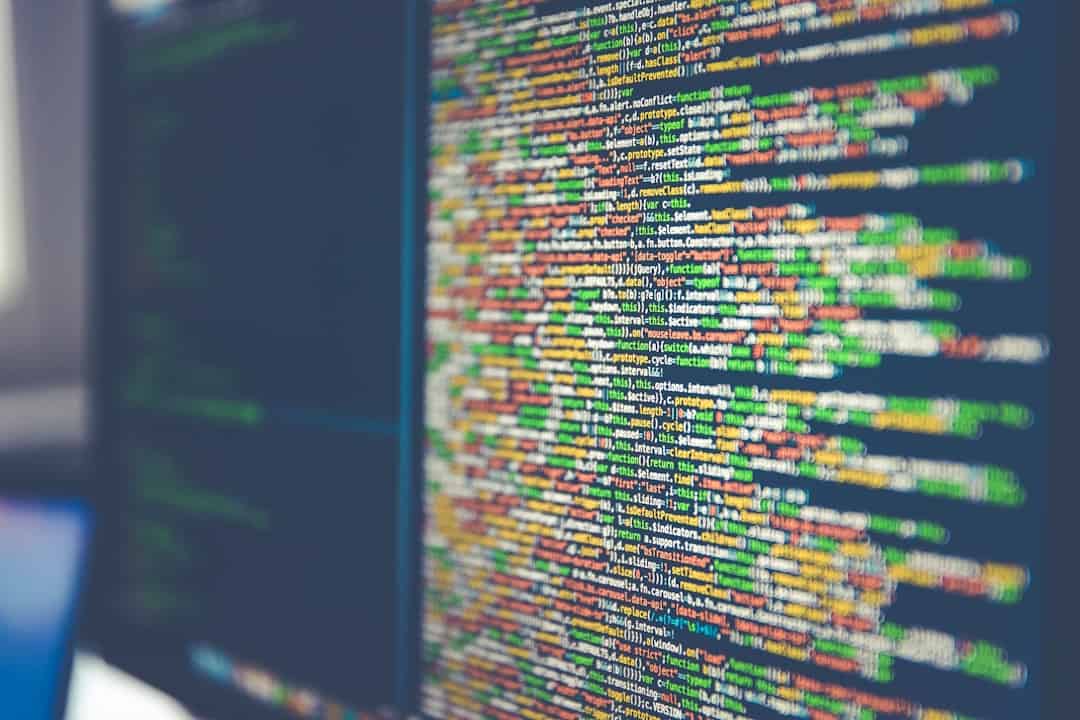Brute force attacks are a prevalent cybersecurity threat where attackers attempt to gain unauthorized access to systems or websites by systematically trying all possible combinations of usernames and passwords. This method relies on the sheer volume of attempts rather than exploiting specific vulnerabilities. Attackers employ automated tools to execute brute force attacks, enabling them to test numerous combinations rapidly.
These tools can process thousands to millions of login attempts within a short timeframe, significantly increasing the likelihood of success. The primary objectives of brute force attacks include accessing sensitive information such as personal data, financial records, or intellectual property. Once an attacker successfully breaches a system, they can potentially cause extensive damage, exfiltrate valuable data, or utilize the compromised system as a launchpad for further malicious activities.
Any system requiring authentication is susceptible to brute force attacks, including popular platforms like WordPress. Website administrators and owners must be aware of the techniques employed in these attacks and recognize potential indicators of an ongoing attack to implement effective protective measures for their websites and users.
Key Takeaways
- Brute force attacks are a common method used by hackers to gain unauthorized access to a website or system by trying multiple password combinations.
- Common methods used in brute force attacks include dictionary attacks, credential stuffing, and rainbow table attacks.
- Signs of a brute force attack on your WordPress site may include a sudden increase in failed login attempts, slow website performance, or unexpected changes to user accounts.
- Steps to protect your WordPress site from brute force attacks include using strong and unique passwords, limiting login attempts, and implementing security plugins.
- Implementing strong password policies is crucial in preventing brute force attacks, including using a combination of uppercase and lowercase letters, numbers, and special characters.
- Using two-factor authentication adds an extra layer of security to your WordPress site by requiring a second form of verification in addition to a password.
- Monitoring and responding to brute force attacks involves regularly checking login logs, implementing IP blocking for suspicious activity, and staying informed about the latest security threats.
Common Methods Used in Brute Force Attacks
There are several common methods that hackers use to carry out brute force attacks. One of the most straightforward methods is to use automated software that systematically tries every possible combination of usernames and passwords until the correct one is found. This software can be programmed to target specific websites or systems and can run continuously until it successfully gains access.
Another method used in brute force attacks is the use of password lists or dictionaries. These lists contain commonly used passwords, as well as variations and combinations of words and numbers. Hackers use these lists to systematically try each password until they find one that works.
This method is often more efficient than trying every possible combination, as it targets the most likely passwords first. In addition to these methods, hackers may also use techniques such as credential stuffing, where they use previously leaked username and password combinations from other data breaches to attempt to gain access to other systems. This method relies on the fact that many users reuse the same passwords across multiple accounts, making it easier for hackers to gain unauthorized access.
Understanding these common methods used in brute force attacks is essential for website owners in order to recognize the signs of an attack and take steps to protect their WordPress site from potential security breaches.
Signs of a Brute Force Attack on Your WordPress Site

There are several signs that may indicate that your WordPress site is under a brute force attack. One of the most obvious signs is a sudden increase in failed login attempts. If you notice a large number of failed login attempts on your site, especially if they are coming from multiple IP addresses, it may be a sign that your site is being targeted by a brute force attack.
Another sign of a brute force attack is a slowdown in the performance of your website. When a hacker is running an automated software to carry out a brute force attack, it can put a significant strain on your website’s resources, causing it to slow down or become unresponsive. If you notice a sudden decrease in the performance of your site, it may be worth investigating whether it is due to a brute force attack.
Additionally, if you receive notifications of unauthorized login attempts or if you notice unfamiliar user accounts being created on your WordPress site, these could also be signs of a brute force attack. It is important for website owners to be vigilant and monitor their site for any unusual activity that may indicate a security breach. Recognizing these signs of a brute force attack is crucial for taking swift action to protect your WordPress site and its users from potential harm.
Steps to Protect Your WordPress Site from Brute Force Attacks
| Step | Description |
|---|---|
| 1 | Use strong and unique passwords for all user accounts |
| 2 | Limit login attempts with a security plugin |
| 3 | Enable two-factor authentication for added security |
| 4 | Keep WordPress and plugins updated to patch security vulnerabilities |
| 5 | Use a web application firewall to block malicious traffic |
Protecting your WordPress site from brute force attacks requires proactive measures to strengthen its security. One of the most effective steps you can take is to limit the number of login attempts allowed on your site. By implementing a login attempt limit, you can prevent hackers from repeatedly trying different combinations of usernames and passwords until they gain access.
Another important step is to use a firewall to block suspicious IP addresses that may be involved in brute force attacks. Firewalls can help identify and block malicious traffic, preventing unauthorized access to your site. Additionally, regularly updating your WordPress site and its plugins can help patch any security vulnerabilities that hackers may exploit in their brute force attacks.
It is also essential to use strong and unique passwords for all user accounts on your WordPress site. Encouraging users to create complex passwords that include a combination of letters, numbers, and special characters can significantly reduce the risk of a successful brute force attack. Furthermore, implementing two-factor authentication can add an extra layer of security to your WordPress site.
Two-factor authentication requires users to provide two forms of identification before gaining access, such as a password and a unique code sent to their mobile device. This can greatly reduce the risk of unauthorized access, even if hackers manage to guess a user’s password. By taking these proactive steps, you can significantly enhance the security of your WordPress site and reduce the risk of falling victim to a brute force attack.
Implementing Strong Password Policies
Implementing strong password policies is crucial for protecting your WordPress site from brute force attacks. Encouraging users to create strong and unique passwords can greatly reduce the risk of unauthorized access. Strong passwords should be at least 12 characters long and include a combination of uppercase and lowercase letters, numbers, and special characters.
It is also important to educate users about the importance of not reusing passwords across multiple accounts. Reusing passwords makes it easier for hackers to gain unauthorized access through brute force attacks or credential stuffing. Encouraging users to use unique passwords for each account can significantly enhance the security of your WordPress site.
Additionally, regularly updating passwords and changing them after any security incidents or data breaches can help prevent unauthorized access. Implementing password expiration policies can prompt users to change their passwords regularly, reducing the risk of compromised accounts being used in brute force attacks. Furthermore, using password managers can help users create and store complex passwords securely.
Password managers generate strong passwords and store them in an encrypted vault, reducing the risk of weak or easily guessable passwords being used on your WordPress site. By implementing strong password policies and educating users about the importance of creating unique and complex passwords, you can significantly enhance the security of your WordPress site and reduce the risk of falling victim to brute force attacks.
Using Two-Factor Authentication

Implementing two-factor authentication (2FA) is an effective way to add an extra layer of security to your WordPress site and protect it from brute force attacks. 2FA requires users to provide two forms of identification before gaining access, typically something they know (such as a password) and something they have (such as a unique code sent to their mobile device). There are several 2FA plugins available for WordPress that make it easy to implement this additional security measure.
These plugins can be configured to require users to enter a unique code sent via email or SMS, or generated by an authenticator app, in addition to their password when logging into their accounts. By implementing 2FA, even if hackers manage to guess a user’s password through a brute force attack, they would still need the second form of identification to gain access. This significantly reduces the risk of unauthorized access and enhances the overall security of your WordPress site.
Educating users about the importance of 2FA and encouraging them to enable this feature on their accounts can greatly enhance the security of your WordPress site. By making 2FA mandatory for all user accounts, you can significantly reduce the risk of falling victim to brute force attacks and protect sensitive information stored on your site.
Monitoring and Responding to Brute Force Attacks
Monitoring your WordPress site for signs of a brute force attack and responding promptly is crucial for protecting it from potential security breaches. Using security plugins that provide real-time monitoring and alerting capabilities can help you identify and respond to brute force attacks quickly. If you suspect that your WordPress site is under a brute force attack, it is important to take immediate action to mitigate the threat.
This may include temporarily blocking IP addresses that are involved in the attack, implementing stricter login attempt limits, or even temporarily taking your site offline if necessary. Additionally, regularly reviewing your site’s access logs and audit trails can help you identify any unauthorized login attempts or suspicious activity that may indicate a brute force attack. By staying vigilant and proactive in monitoring your site’s security, you can take swift action to protect it from potential harm.
In the event of a successful brute force attack, it is important to respond quickly by resetting compromised passwords, notifying affected users, and conducting a thorough security audit to identify any vulnerabilities that may have been exploited. By responding promptly and effectively to brute force attacks, you can minimize the impact on your WordPress site and its users. In conclusion, understanding the methods used in brute force attacks, recognizing the signs of an attack on your WordPress site, and taking proactive steps to protect it are essential for enhancing its security.
By implementing strong password policies, using two-factor authentication, and monitoring and responding effectively to potential threats, you can significantly reduce the risk of falling victim to brute force attacks and protect sensitive information stored on your WordPress site.
If you’re interested in learning more about the ethical considerations of technology, you should check out this article on challenges and opportunities in the metaverse: ethical considerations. It delves into the potential risks and benefits of virtual reality and the metaverse, providing valuable insights into the impact of these technologies on society.
FAQs
What is brute force attack on WordPress?
A brute force attack on WordPress is a method used by hackers to gain unauthorized access to a WordPress website by repeatedly trying different username and password combinations until the correct one is found.
How does a brute force attack work on WordPress?
In a brute force attack on WordPress, hackers use automated software to systematically try different combinations of usernames and passwords until they find the correct one. This is done in an attempt to gain access to the WordPress admin dashboard and take control of the website.
What are the risks of a brute force attack on WordPress?
The risks of a brute force attack on WordPress include unauthorized access to the website, potential data breaches, and the ability for hackers to install malicious software or deface the website. It can also lead to a loss of customer trust and damage to the website’s reputation.
How can I protect my WordPress website from brute force attacks?
To protect your WordPress website from brute force attacks, you can implement security measures such as using strong and unique passwords, limiting login attempts, using two-factor authentication, and installing security plugins that can detect and block brute force attacks.
What should I do if my WordPress website is targeted by a brute force attack?
If your WordPress website is targeted by a brute force attack, you should immediately change all passwords, including the WordPress admin password, and implement additional security measures such as IP blocking and monitoring for suspicious activity. It is also recommended to notify your web hosting provider and consider seeking professional assistance to mitigate the attack.











Leave a Reply